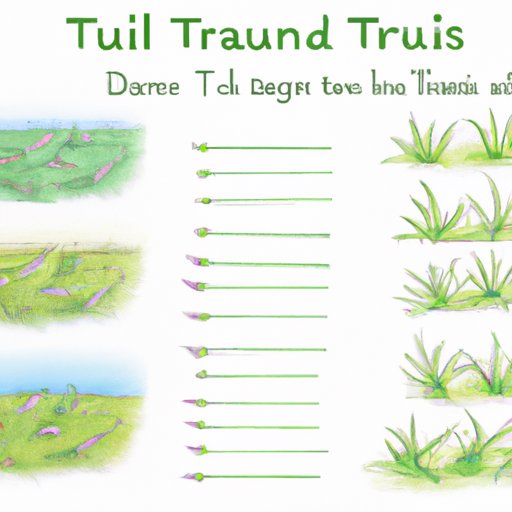
Introduction
Drawing grass can seem like a daunting task for beginners, but with the right technique, it can be a fun and rewarding experience. In this article, we will provide a step-by-step guide, video tutorial, tips and tricks, common mistakes to avoid, and inspirational gallery for drawing grass. Whether you are an experienced artist or just starting out, this article has something for everyone.
Step-by-Step Guide
When it comes to drawing grass, the key is to break down the process into simple steps. Here is a step-by-step guide to help you get started:
Step 1: Start with a basic outline of the shape and direction of the grass blades.
Step 2: Draw the hatching lines for the grass blades, starting from the base and working up to the tip.
Step 3: Vary the length and thickness of the hatching lines to create a more natural look.
Step 4: Draw the blades of grass in different directions to add texture and dimension.
Step 5: Use a blending tool or eraser to soften any hard lines and create a more realistic look.
Illustrations accompanying each step complement and enhance the reader’s understanding of how to draw grass.
Video Tutorial
In addition to the step-by-step guide, a video tutorial can provide a visual demonstration of the process of drawing grass. This is particularly helpful for visual learners. In the video tutorial, you can see the artist’s movement, gauge the right pencil pressure, and the final output. The video tutorial can be paused and repeated to mimic the techniques.
Tips and Tricks
To create a professional and polished image, there are some tips and tricks that you can keep in mind while you draw grass:
Tip 1: Choose the right materials, such as a fine pencil or light colored ink for sketching. Thick brushes are also great for filling in larger areas.
Tip 2: Create texture by varying the shape and direction of the hatching lines and adjusting the pressure on your pencil.
Tip 3: Use light and shadow to add depth and dimension to your grass drawing. Light can also be added from the sides or topping of the page to create a natural environment.
Tip 4: Consider the depth, height and width of the grass in your scene to shape perspective.
Tip 5: Use inspiration from nature and around you when choosing the type of grass to draw.
These tips and tricks for drawing grass take into account the minute detailing and finer aspects to make your drawing stand out.
Common Mistakes to Avoid
As with any form of art, there are common mistakes beginners make when drawing grass. Here are a few to avoid:
Mistake 1: Drawing every blade of grass the same length and thickness. This results in an artificial and flat-looking drawing.
Mistake 2: Overworking the grass. Too many lines or smudges can make the picture look muddled and lost.
Mistake 3: Not paying attention to the background of the drawing, which can change the look of the grass.
By paying attention to these common mistakes and knowing how to avoid them, the copy of your drawings will look beautiful.
Inspirational Gallery
Viewing an inspirational gallery is a great way to get ideas for your own grass drawings. The gallery showcases various styles, techniques, and applications for drawing grass. Here, viewers can see how textures, layering, variations, and depth add the finishing touch to your grass drawing.
Conclusion
Drawing grass may be a challenge at first, but this guide provides step-by-step instructions and inspiration to make it a fun and enjoyable experience. With the aid of tools like the video tutorial and examples from the inspirational gallery, the process of drawing grass can be simplified. The tips and tricks offer the finer details and techniques to master. Avoiding common mistakes during the process would ensure a polished result. Now it’s your turn to give it a go and show us what you can do.




